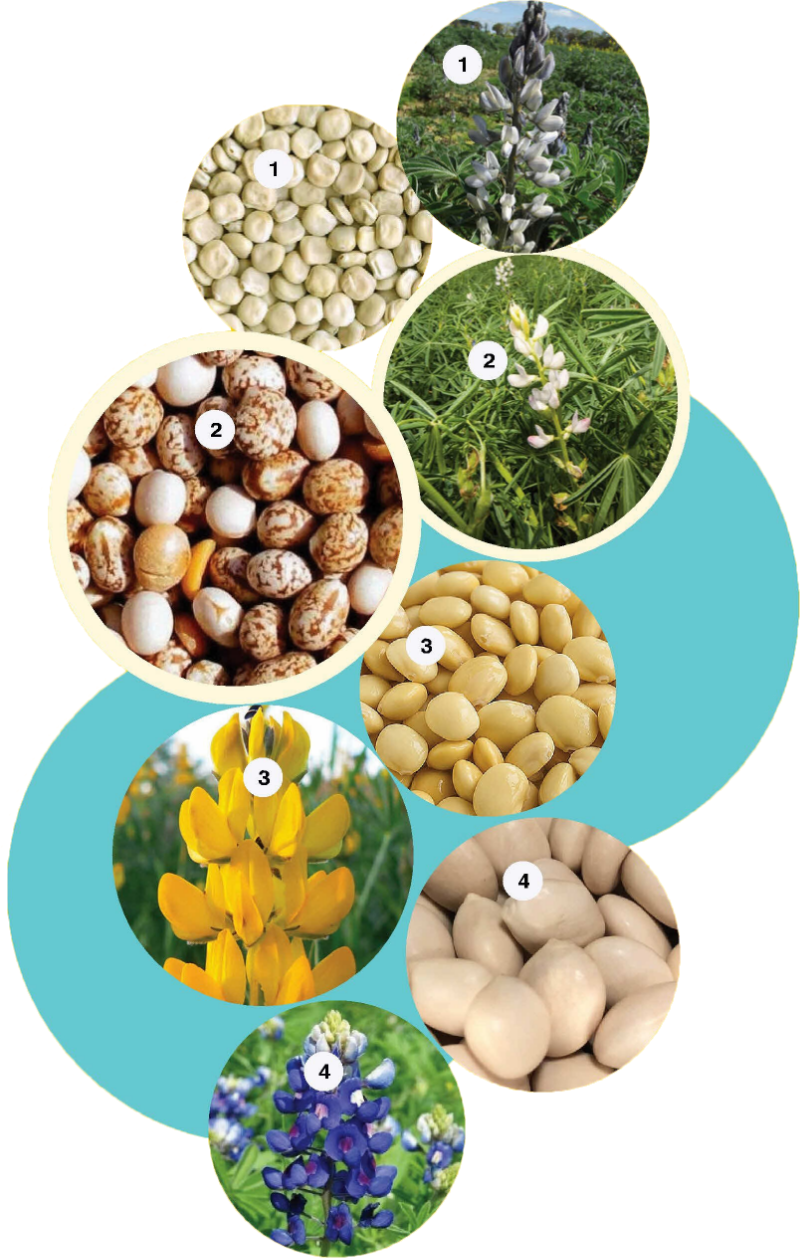What are LUPINS?

Lupins are Legume Beans (as are Lentils, Chickpeas, Peas, Beans, Soybeans & Peanuts)
Lupinus is a large and diverse genus in the legume family (Fabaceae) with numerous species and covering a wide climate range. The species of the genus can be categorized into two groups:
- “Old World” species, Mediterranean, North and Eastern African; and
- “New World” species, North and South America.
The “Old World” group consists of only 12 annual species, whereas the the “New World” group consists of many more species that range from annual species, shrubs and herbaceous perennials.
The “New World” Lupinus is taxanomically ambiguous with species poorly defined however the estimated number of species is approximately 280.
Only 4 species of the Lupinus L. genus are cultivated in modern agriculture being the following:
LUPINS as Commercial crops There are only 4 Lupis Species that have been domesticated for cropping
- Lupinus Albus White Lupin - Southern European
- Lupinus Angustifolius Narrow leafed Lupin Australia & N Europe
- Lupinus Luteus Yellow Lupin - Poland, Russia & Germany
- Lupinus Mutabilis Andean Lupin
Global production
1,610,969t 930,717ha (2017 FAO)
Australia ~ 65% of global production of Lupins

Lupins have an acient history in agriculture that traces back more than 4000 years, in the Mediterranean region and the American continent. L. albus was cultivated in ancient Greece, Egypt, Rome and other Mediterranean countries before 2000 BC for green manure, animal and human consumption, as well as for cosmetic and medicine use. The domestication of L. mutabilis took place in the Andean states in about 700–600 BC, while that of L. luteus and L. angustifolius in Baltic countries in the 1860s.
Lupins in their wild state, are hard seeded (water impermeable), have shattering pods and high levels of alkaloids that make the seeds bitter & toxic to animals. Therefore their use for animal and human consumption required a ‘debittering process’ limiting their usage.